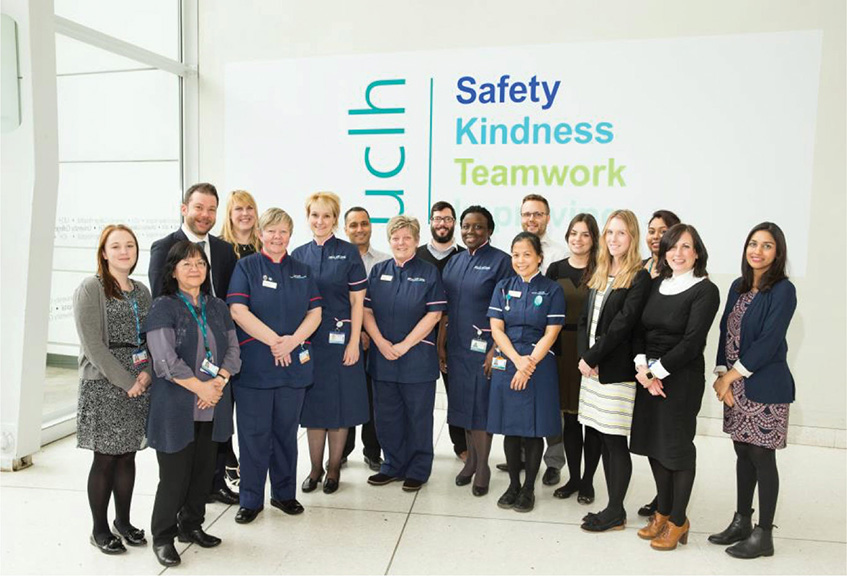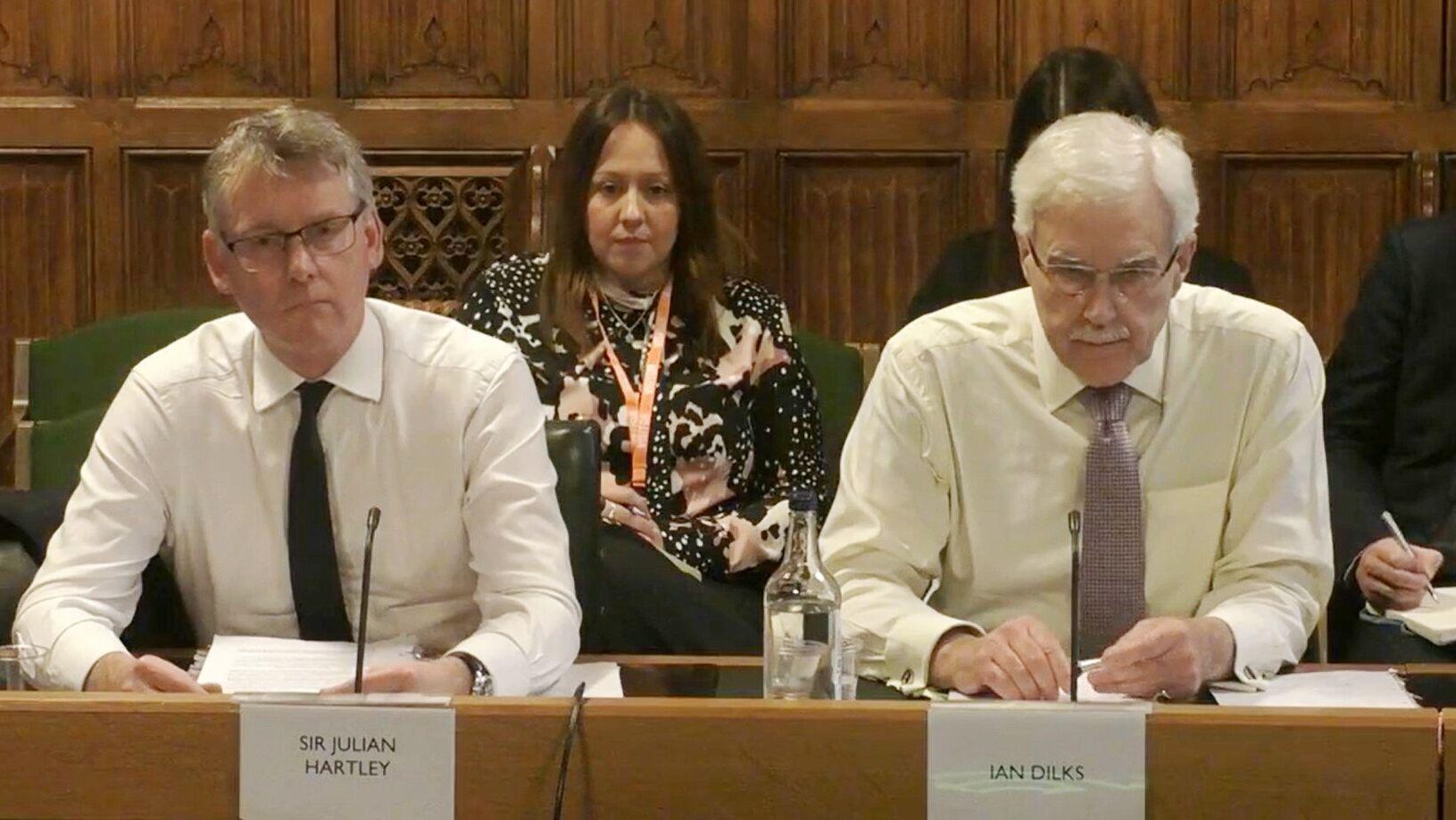How one London trust transformed its recruitment operation
Recruiting NHS staff in London is tough, but managers at UCLH have found innovative ways to slash vacancy rates for nurses and midwives.

Until recently, London’s most prestigious hospitals had escaped the worst of the nursing shortage. With fewer nurses being trained, the 1% cap on public sector pay rises and fast-rising transport and housing costs, there was fierce competition for staff in the capital. But teaching hospitals offering the 20% central London pay premium had still been able to recruit. Then things changed, and UCLH – a cluster of five hospitals around the Euston Road – felt the squeeze.
“We’d enjoyed quite good times,” recalls Julie Hogg, the trust’s deputy chief nurse. “Then we got a little bit behind the game: we’d been living on our brand, and recruitment hadn’t had the energy and focus that it needed. Other organisations began attracting people who we might have brought in.”
Massive shock
Staff shortages were “impacting on patient experience as well as staff experience,” Hogg adds. “If you haven’t got enough nurses, you can’t respond to patients’ needs as quickly as you’d like.” But, says Faith Thornhill, a senior nurse, RCN lead and chair of UCLH’s trade union committee, it was only when UCLH introduced an electronic rostering system that staff saw “the evidence that showed the level of vacancies across all staff groups. That was a massive shock.” In February 2015, UCLH’s vacancy rate in nursing and midwifery reached 16%. “This situation couldn’t carry on,” Thornhill adds.
Director of nursing Flo Panel-Coates and workforce director Ben Morrin, who’d both joined the trust the previous year, set up a taskforce – bringing together senior nurses and allied health professionals (AHPs), union reps, and staff from the HR, communications and education departments – and began redefining the challenge. This wasn’t just an HR problem. “Our key learning was bringing in medical and scientific leads, because they were the primary customers,” says Morrin.
The two directors began gathering ideas from all sides – and taking them seriously. “They were very dynamic meetings; lots of ideas were thrown around, and all of them were discussed. It was a very safe environment,” recalls Thornhill. “Staff were listened to. We weren’t just token union reps; we were integral to the work.”
Soon, things were moving fast. Rather than recruiting staff as vacancies arose, the trust began using historical data to predict demand and build a pipeline of suitable candidates. It committed to paying all staff the London Living Wage, and is “working with contractors to encourage them to pay it too,” says Morrin. And it invested in a “careers clinic”, where staff interested in moving into different specialisms could access training and seek relevant jobs within UCLH.
Gains all round
The clinic gave staff a way to develop their careers without leaving the trust, and provided a clearing house that hastened recruitment and strengthened nursing career paths. “Managers gained because they didn’t have to go through a full recruitment process; nurses gained because they could change career direction or experience a different specialism; and patients gained because we could keep valuable nurses in our teams,” explains Thornhill.
Meanwhile, says Morrin, UCLH’s recruitment marketing was rebuilt around “a new communications platform, designed and led and facilitated by frontline clinical staff”. Working with an advertising agency, nurses created a poster campaign using photos of serving staff. The trust set up an enquiries system to put potential recruits in direct contact with existing staff who could help answer their questions: “People based in other parts of the world are matched up with staff from the same country or who’ve gone through the same journey,” says Morrin, “so you’re speaking to people like you.”
The taskforce didn’t have to wait long to get results. Within a year UCLH had 551 more nurses and midwives on the payroll, and the overall vacancy rate had fallen to 6%. Meanwhile, the careers clinic produced a 127% increase in internal promotions and transfers and, along with the predictive recruitment strategy, cut hiring timescales by 25%. The resulting reduction in the use of agency staff has cut overall costs by more than £3m annually, says Morrin.
Patients too are feeling the benefits. “We’re not struggling with low staffing levels, which can put standards of care at risk,” says Thornhill. “And bank and agency staff are excellent nurses, but with permanent staff we can maintain the continuity of care which supports high standards. They know the policies, the procedures and the patients.”
Spreading the word
The taskforce’s work was recognised when UCLH won the Recruitment and Talent Management Award at this year’s CIPD People Management Awards, attracting interest from other trusts keen to learn from the project. This opportunity to spread the word has “been one of the most rewarding aspects,” says Morrin, adding that the lessons are being shared through the citywide partnership Capital Nurse.
Morrin hopes to get the vacancy rate down to 5% – leaving enough wriggle room to bring in specialist staff when required – but he warns that the wider London jobs market for nurses and AHPs is becoming ever tighter. “Too little has been done to ensure that national supply is right,” he says. At national level, Hogg explains, “there’s a need for “proper workforce planning and making sure that we train enough nurses – particularly in the specialities where there are chronic shortages, like neo-natal nurses, sonographers”. The loss of bursaries for nursing training won’t help, she adds.
Then there’s Brexit. “The future of good medical staff will rely on us getting the best from the global jobs market,” says Morrin, pointing out that 15% of UCLH staff were born in continental Europe. “Across the world, the best healthcare relies on globally diverse professional groups, and the NHS will fall behind if it can’t rely on that. It’s important that we speak up for open labour supply. Immigration controls could affect us very significantly.”
Listen to people
Asked about the lessons from UCLH’s recruitment work, Hogg replies: “Listen to the people who work in your organisation, and use the experience of your staff to improve development opportunities and campaigns. Our nurses, doctors and managers came together with real executive support. And you have to invest to save.” The project is set to yield £1.46 for every pound invested by the end of the financial year, Morrin adds.
For Thornhill, a key lesson is that “if you work in partnership with the trade unions, you’ll gain the engagement of staff across the organisation – and once staff are engaged, you’re halfway to success. So work constructively with us, rather than seeing us as a challenge.”
Collaboration is more important than competition
In the longer term, Morrin argues that trusts must begin working together on recruitment: “Collaboration is more important than competition – but we’re set up for competition.” He believes NHS organisations should use the opportunity presented by STPs to build “common campaigns, common recruitment. If we do that, everybody will win.”
But nobody will win, he warns, unless the government makes the right decisions on medical training and immigration controls. “If higher education institutions aren’t given the right financial backing, and government doesn’t liberalise international supply… we’ll be in a more challenging rather than a less challenging position.”
By bringing staff together and tapping into the expertise of medical leads, UCLH managers have tackled the immediate recruitment challenge – saving money and improving patient care. But the NHS’s ageing nursing workforce, inadequate national training provision and the looming cloud of Brexit “add up to difficult times ahead,” Hogg concludes. UCLH has done what it can to solve its problems; now the government must pick up the baton.
A consultant to MiP, Matt Ross is an editor, journalist and change manager.
Related News
-

Regulating the managers: more questions than answers
The Labour government’s plans for regulating NHS managers are still shrouded in mystery, and the three options on the table each have their pros and cons. Rhys McKenzie weighs up the choices and gauges the views of MiP members on the best way forward.
-

The inspector falls: why the CQC needs a fresh start
After years of chaos, the Care Quality Commission urgently needs to rebuild trust and credibility with the public and the services it regulates. What needs to change and what are the priorities for new boss Sir Julian Hartley? Alison Moore reports.
-

Voice, value and vision: what analysts need from the NHS
Data analysts play a vital role in an NHS which is increasingly data-driven and focused on public health trends. But the NHS faces fierce competition for skilled analysts and many feel the health service fails to value them or fully use their talents. Alison Moore reports.